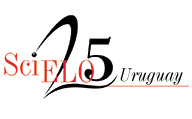Semiotics of the contemporary antihero
actantial models and axiologies underlying the paradigmatic shift of the heroic
DOI:
https://doi.org/10.25185/18.10Keywords:
Hero, Antihero, Semiotics, Discourse, Narrativity, ActantsAbstract
This article approaches the figure of the antihero from a sociocultural semiotic perspective of a discursive and narrative matrix. Specifically, we draw on the actantial model developed by Algirdas J. Greimas, which is a reworking of Vladimir Propp's spheres of action. We argue that, in our day and age, the figure of the antihero not only gives sense to characters in fictional texts but also functions as a sociocultural construct that serves to give sense to events of social life. We argue that, in recent decades, there has been a shift from the «classical-modern» heroic model, linked to virtuous ethical values considered an expression of the Good, towards more ambiguous, contradictory and ethically problematic figures. We show how the figure of the anti-hero, far from modifying the classical narrative structure (the canonical Greimasian scheme), reformulates it. We conclude that the figure of the antihero allows us to reread the contemporary social narrative as a space of dispute for sense, morality and identity, and hence functions as a paradigmatic shift with regards to the classic-modern model.
Downloads
References
Angenot, Marc. El discurso social. Buenos Aires: Siglo XXI, 2010.
Barthes, Roland. Élements de sémiologie. París: Seuil, 1965.
Barthes, Roland. Le systéme de la mode. París: Seuil, 1967.
Bernardelli, Andrea y Eduardo Grillo. «Introduzione. Semio-etica del rough hero. Quando i protagonisti sono cattivi». E|C, nº 20 (2017): 1-9.
Braga, Paolo; Giulia Cavazza y Armando Fumagalli. The dark side. Bad guys, antagonisti e antieroi del cinema e della serialità contemporanei. Roma: Dino Audino, 2016.
Bröckling, Ulrich. Héroes postheroicos. Madrid: Alianza, 2021.
Campbell, Joseph. El héroe de las mil caras. México: Fondo de Cultura Económica, 2008.
Díaz, Esther. Posmodernidad. Buenos Aires: Biblos, 2005.
Eco, Umberto. Apocalípticos e integrados. Barcelona: Lumen, 2001.
Eco, Umberto. Construir al enemigo. Barcelona: Lumen, 2011.
Floch, Jean-Marie. Les formes de l’empreinte. Périgueux: Fanlac, 1986.
Floch, Jean-Marie. Sémiotique, marketing et communication. París: Presses Universitaires de France, 1990.
Fontanille, Jacques. Sémiotique et littérature. París: Presses Universitaires de France, 1991.
Freire, Alfonso y Montserrat Vidal-Mestre. «El concepto de antihéroe o antiheroína en las narrativas audiovisuales transmedia». Cuadernos.info, nº 52 (2022): 246-265. https://doi.org/10.7764/cdi.52.34771. DOI: https://doi.org/10.7764/cdi.52.34771
García, Alberto. «Moral Emotions, Antiheroes and the Limits of Allegiance». En Emotions in Contemporary TV Series, editado por Alberto N. García. Londres: Palgrave Macmillan, 2016. DOI: https://doi.org/10.1007/978-1-137-56885-4_4
Greimas, Algirdas J. Du sens II. París: Du Seuil, 1983.
Greimas, Algirdas J. Sémantique structurale. París: Presses Universitaires de France, 1986.
Greimas, Algirdas J. y Joseph Courtés. Sémiotique. Dictionnaire Raisonnée de Théorie du Langage. París: Hachette, 1979.
Hjelmslev, Louis. Prolegomena for a theory of language. Madison: Wisconsin University Press, 1964.
Landowski, Éric. Les interactions risquées. Limoges: PULIM, 2005.
Lipovetsky, Gilles. La era del vacío. Barcelona: Anagrama, 1983.
Lorusso, Anna María. Cultural Semiotics. Cham: Springer, 2015. DOI: https://doi.org/10.1057/9781137546999
Lotman, Juri. La semiosfera, I. Madrid: Cátedra, 1996.
Lyon, David. Posmodernidad. Madrid: Alianza, 1999.
Lyotard, Jean François. La condición posmoderna. Madrid: Cátedra, 1983.
Makolkin, Anna. Name, Hero, Icon. Semiotics of Nationalism through Heroic Biography. Berlin: De Gruyter, 1992. DOI: https://doi.org/10.1515/9783110887587
Marrone, Gianranco. Introduzione alla semiotica del testo. Bari/Roma: Laterza, 2011.
Moreno, Sebastián. «Healthcare workers Vs. Coronavirus: A semiotic study of the Hero-Villain narrative articulation of the Covid-19 pandemic». Punctum 8, nº 2 (2022): 33-60. http://dx.doi.org/10.18680/hss.2022.0015. DOI: https://doi.org/10.18680/hss.2022.0015
Moreno, Sebastián. «Abordar las semiosferas a partir de listas de canciones: semiótica de las playlists». Dixit 38 (2024): e4050. https://doi.org/10.22235/d.v38.4050. DOI: https://doi.org/10.22235/d.v38.4050
Moreno, Sebastián. The Semiotics of the Covid-19 Pandemic. Londres: Bloomsbury, 2024.
Neimneh, Shadi. «The Anti-Hero in Modernist Fiction: From Irony to Cultural Renewal». Mosaic: An Interdisciplinary Critical Journal 46, nº 4 (2013): 75-90. DOI: https://doi.org/10.1353/mos.2013.0036
Pozzato, Maria Pia. Capire la semiotica. Roma: Carocci, 2013.
Propp, Vladimir. Morfología del cuento. Madrid: Fundamentos, 1967.
Saussure, Ferdinand de. Curso de lingüística general. Buenos Aires: Losada, 1964.
Taylor, Charles. La ética de la autenticidad. Barcelona: Paidós, 1991.
Vaage, Margrethe Bruun. The Antihero in American Television. Londres: Routledge, 2016. DOI: https://doi.org/10.4324/9781315715162
Verón, Eliseo. La semiosis social. Barcelona: Gedisa, 1988.
Weinelt, Nora. «Zum dialektischen Verhältnis der Begriffe “Held” und “Antiheld”». Freiburg 3, n°1 (2015): 15-22. https://doi.org/10.6094/helden.heroes.heros/2015/01/03



























 This work is under a
This work is under a 